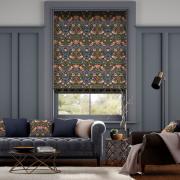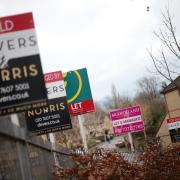Grand Designs has seen hundreds of brave homeowners tackle the task of "designing, building and buffeting" all under the eyes of Kevin McCloud.
Throughout its 20 years on Channel 4 Grand Designs has seen it all from caves, water towers, castles and even a clay house, every new episode is a tense wait to see the final product.
Every build has been impressive in its own way but some stand out just every so slightly more than others.
Here is a round-up of the best homes on Grand Designs.
The 7 best Grand Design homes
The Water Tower, London
Leigh Osborne and Graham Voce took on the ambitious task of renovating a giant 1887 water tower into their dream home in 2012.
Creating two extensions and repairing the brick water tower, the homeowners had a 12-month deadline to complete the build but by the time surveys and planning permission were in place, they only had five months left.
In the end, it took eight months to finish the water tower with an estimated cost of £2m to complete the project not including the price of the property.
But in 2018 the two put the water tower on the market for a price of £6.5m before the price dropped to £4.75m.
It was later withdrawn from the market and in 2021 went back on sale and was eventually sold for £2.75m.
The Rockhouse, Worcestershire
In 2015, Angelo Mastropietro brought a mass of stone on his birthday in hopes of turning it into his dream home.
Designing the home himself, Angelo carved out the 800-year-old cave in the Wyre Forest using traditional methods along with buying a 200-year-old stone cottage nearby.
Angelo was not able to live in the cave due to planning restrictions with the property just for holiday let.
The let, 'Rockhouse Retreat' is now very popular and has a waiting list as hundreds hope to stay in one of Grand Design's best builds.
The Cob House, East Devon
Another great Grand Designs build is the Cob House from 2013 created by Kevin McCabe which took more than nine years and over 2,000 tonnes of cob.
Also one of the biggest homes on Channel 4 shows history, Kevin became the 'King of cob' with the home including six bathrooms, four bedrooms, a kitchen-dining room, living room, utility, cloakroom, study, gym, games room, plant room, two sunspaces and a greenhouse.
The home, named Dingle Dell ended up becoming a part of history but it did not come without some troubles for Kevin.
Kevin found himself living in a caravan and borrowing money from friends along with his 30-year marriage ending during the build.
Arched Eco Home, Kent
In 2009 Richard and Sophie Hawkins aimed to build the Arched Eco Home which was inspired by a 14th Century technique.
Set in Kent, the home had a unique timbrel arch roof and used a multitude of cutting-edge echo technologies.
The arch was built using 26,000 clay tiles which were glued together using plaster of Paris and while there was no physical support the arch was successfully completed.
Dinton Castle, Aylesbury
In 2018 one family hoped to give a new life to Dinton Castle in Aylesbury as husband and wife Jamie and Mimi Fernandez used new technology and traditional restoration to transform an old folly.
A highlight of the property was the engineered timber staircase that had a top layer of reclaimed wood along with the embedded fossils in the property's stonework.
The impressive home also features a top-floor terrace, exposed walls and a glass balustrade staircase.
Huf House, Surrey
Grand Designs has since seen a few Huf Houses but the Surrey home in 2004 started it all.
Created by David and Greta Iredale the home was designed in Germany and made with precision, with little to no waste and very impressive eco-credentials.
Once the home was shipped over from Germany, the Huf House took just four and half days to be built and cost £495,000.
RECOMMENDED READING
- Meet the Sussex couple who built a triangular house
- Inside the Grand Designs biophilic home near Chichester
- The Dome House in Bowness - what happened next with the Grand Designs property?
Cornish Engine House
Last but not least, the Cornish Engine House was built in 2011 by stonemason Adam Purchase and his partner Nicola Brennan.
Buying the land for £200,000 the plot had two engine houses on it with plans to turn one of the houses into a home and the other one into a holiday let.
The four-storey 19th-century engine home features the original stone floor in the kitchen, the broad pine floorboards upstairs and the exposed stonework.



























